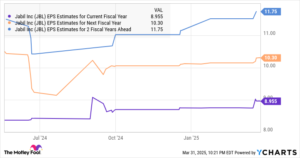AI Expert from Amazon Explains Why Vibe Coding Is Here to Stay

Understanding Vibe Coding: A New Era in Software Development
What is Vibe Coding?
Vibe coding is an emerging concept in software development that envisions a collaborative relationship between developers and advanced AI systems. This term was introduced by Andrej Karpathy, a co-founder of OpenAI, who describes it as a method where developers can immerse themselves in the creative process of coding, often relying heavily on AI capabilities. This innovative approach encourages programmers to give "into the vibes," effectively allowing them to focus on broader concepts without getting bogged down by the intricacies of coding.
The Role of AI in Vibe Coding
According to Deepak Singh, VP of Amazon Web Services (AWS), AI agents have transitioned from merely assisting with typing to acting as genuine partners in the programming process. This evolution enables developers to leverage AI’s capabilities to enhance their productivity significantly. Singh elaborates that the current AI landscape allows developers to engage with tools that "help you build your software" rather than just help with the typing aspect.
Benefits of Vibe Coding
- Increased Productivity: Vibe coding opens up new opportunities for software developers to focus on high-level problem-solving rather than mundane coding tasks.
- Enhanced Creativity: With AI taking on routine coding functions, developers can explore innovative solutions and original ideas.
- Streamlined Workflow: AI tools help clarify complex problems, making the development process smoother.
- Collaboration: As developers give clearer instructions to AI, they can accomplish tasks more quickly and efficiently.
AI Advancements Driving Vibe Coding
The recent advancements in AI, particularly generative AI tools such as ChatGPT, have changed how developers approach coding. When ChatGPT debuted in late 2022, it quickly gained popularity among developers looking to streamline their coding processes, even though there were occasional inaccuracies in its output.
In 2024, many tech companies, including Amazon with its Q Developer AI assistant, released models that can reason and tackle complex problems. This enhanced capability is partly responsible for the uptick in vibe coding practices. For instance, AWS recently introduced features allowing developers to communicate with Q in multiple languages, reflecting the tool’s growing accessibility and utility.
Real-world Applications of Vibe Coding
Some organizations have successfully implemented vibe coding, leading to significant productivity boosts. One noteworthy example is National Australia Bank, where Singh claims that approximately 50% of their production code now comes from Q Developer rather than being manually written by human programmers. This statistic underscores the tangible benefits of adopting vibe coding techniques in real-world scenarios.
Skills for Successful Vibe Coding
For developers looking to excel in vibe coding, several key attributes stand out:
- Clarity in Communication: The best developers communicate their needs and directives clearly to the AI. This clarity allows for better collaboration and faster progress.
- Problem-Solving Mindset: Successful vibe coding hinges on the developer’s ability to analyze and simplify complex issues rather than merely troubleshooting code.
The Future of Vibe Coding
As AI tools continue to evolve and integrate into the software development process, vibe coding is likely to become a mainstay. Developers are finding joy in utilizing these technologies, as they allow for greater progress and efficiency in their work. The focus is shifting from simply writing complex code to a more strategic and problem-oriented approach, highlighting the ongoing transformation within the software development industry.
Vibe coding reflects an exciting advancement in how developers can work with technology, nurturing a collaborative environment that fosters innovation and creativity, ultimately changing the landscape of software development for the better.





